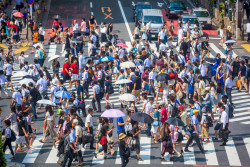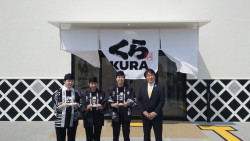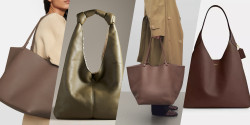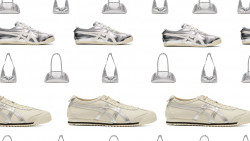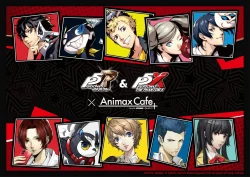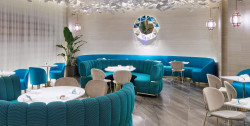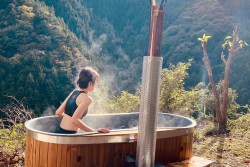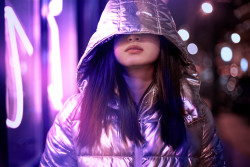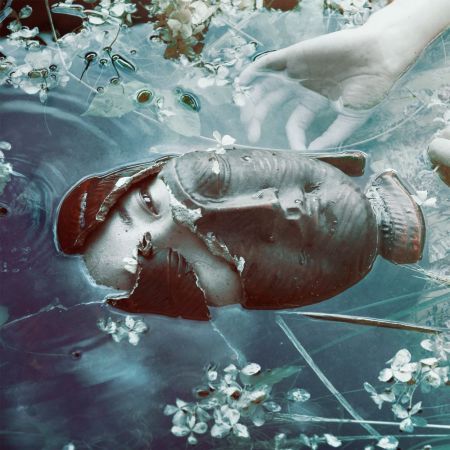
June 21, 2022
The Plight of an Artist
“One can have no smaller or greater mastery than mastery of oneself” — Leonardo da Vinci
By Mike Smith
“When many other artists might turn to Photoshop, Slaby starts with surreal sketches from her mind, then goes to all lengths necessary to build her imagination in reality. Burns, chemical poisioning and complex setups — after hours of experimentation, Slaby’s final works are carefully arranged gateways into her inner self.
Art comes from a place of love, hate, sadness, and happiness. It’s pure, unfiltered emotion. Artists can encapsulate their passion into gifts bestowed upon those who witness. This relationship can be parasitic or symbiotic.
Think back to the first drawing, painting or macaroni art you gave to your parent. Sure, it might not have been something worthy of the Louvre, but your heart was in the right place. It felt special when your mother placed it on the fridge and why it hurt to find it in the trash a week later.
Everyone is capable of making art or being creative. It’s part of what makes us human. It’s why art is so subjective and polarizing. Why a chaotic, paint-splattered Jackson Pollock canvas and a dreamy Claude Monet scene can be worth millions, and why negative thoughts like imposter syndrome, depression and lack of inspiration can be detrimental to creativity. However, if one possesses the drive and talent to get out of your own way to create from emotion, you can be rewarded with jubilation.
For the past ten years, Reylia Slaby has employed light as a tool on her emotional journey to feeling human through fine art photography.
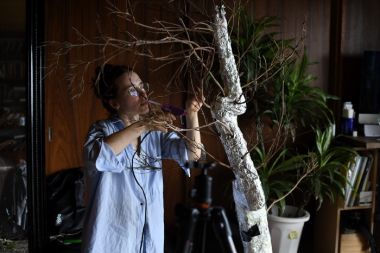
Start Crawling
“From a very young age, I always wanted to make things,” says Slaby, sitting in a tatami room bestrewn with half-completed projects and art supplies.
“It was natural. Just being a child and drawing things, it continued and never really stopped. Eventually, it blended into different things, but I really loved drawing. At the time, it wasn’t for anyone but myself.”
As an American citizen born and raised in Japan, Slaby had quite an unorthodox upbringing. Being homeschooled — alongside three sisters and a twin — in the Kansai countryside, she was at times alienated by a society that she considered home.
“I remember as a kid being asked where I was from, and of course, I would answer Japan,” says Slaby. “They would always laugh, thinking I was joking. To me, there was no other answer.
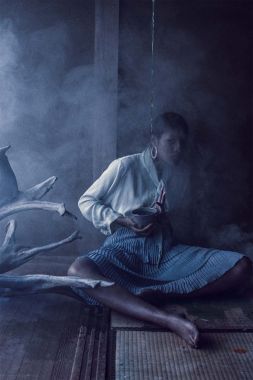
“Growing up in the countryside didn’t help, especially as a twin. All the attention really affects you. I couldn’t leave my house that much as a child, so I had a lot of free time, which I mostly used to read. In a sense, not going to school was a good thing. Depending on what type of school you go to, I feel that you get told what you can’t do or what you’re doing wrong quite often. For me, we never had that. I had to learn to correct myself as I went along.”
“From a very young age, I always wanted to make things,” says Slaby, sitting in a tatami room bestrewn with half-completed projects and art supplies. “It was natural.”
In a way, this lack of structure allowed Slaby to discover her talent for hyperrealism drawing.
“You have to be so focused when it comes to realism. My favorite thing to draw was always the eyes, I would start a drawing, and hours would fly by before I even realized it,” Slaby says with a smile. “It was amazing. I have never felt the same high as I did from drawing.”
As with most hobbies or passions, the escapism you experience is priceless. However, the more time you invest, the more skilled you become, and people take notice.
First Steps
“When I started doing commissions, I was very, very, very susceptible to other peoples’ opinions and thoughts on which direction I should go in. At 16 years old, I was told by my parents or clients that
I should draw specific things to make more money. It was a lot of pressure, and I started to lose sight of how much fun
it was.”
“I’d do portraits for families to make
more money, and sometimes I would get amazing reactions, but then you get told by others, ‘Ooh, do I actually look like that?’ It’s quite embarrassing. It’s frustrating. It became hard to enjoy drawing.”
With the lack of a creative outlet, Slaby looked to other avenues. From writing to dancing, modeling to reading, she experimented with different ways of self-expression and eventually came upon photography.
“It started with the pencil, but when my interest in taking pictures started to overpower it, I put drawing on the back burner and flung myself into photography,” wrote Slaby in a 2014 blog post. “I was sticking with portraits and beauty shots, but I felt like it still wasn’t exactly where I wanted to be.
“But in the spring of 2013, I had my first intentional conceptual shoot. It was just a small idea I had and the concept meant something to me. From that point on, I knew that I had found something I loved. It felt like magic.”
“I remember as a kid being asked where I was from, and of course, I would answer Japan. They would always laugh, thinking I was joking. To me, there was no other answer.”
From then, Slaby took what she learned through trial and error, honed her skills and made it into a career. She had the opportunity to work with the likes of Adobe, L’Officiel and Mr. Children. However, no matter how far she made it up the ladder of success, internal turmoil was always lurking a few rungs below.
Heavy the Head
“Making art for money can be a dangerous thing,” Slaby states. “I’ve been trying to mentally separate the two, but those thoughts creep in. I try to push the thoughts away as much as possible because I know It’s not conducive to creativity. It’s a shame.
“I feel that creativity, down at its core, is a very natural thing for everybody. Even people who think they’re not creative. It’s an incredibly natural thing. We’re always building, we’re always problem-solving and we’re always admiring beauty. It’s just that in this world with capitalism, money and all these kinds of things, it’s very unnatural and doesn’t mix with creativity.”
According to Slaby, she typically shies away from the title of an artist but is simultaneously stuck with it. With a fear of being unable to live up to the title, she has found a sense of distrust building up inside of herself.
“When I look back at my repertoire, I’ve worked with a lot of really cool, amazing, wonderful and well-renowned people,” says Slaby. “But at the same time, I feel like I still have a long way to go in my own work. I think that’s part of the reason why I try to think back to why I’m doing this.
“I’m trying to trust myself. There were so many times when I didn’t listen to those tiny voices of intuitions. I quieted them and ignored them. Then, in the end, I realized, oh shit, I heard it! I should have quieted all these other thoughts and just let that intuition rise up. So I’m trying to do that now.”
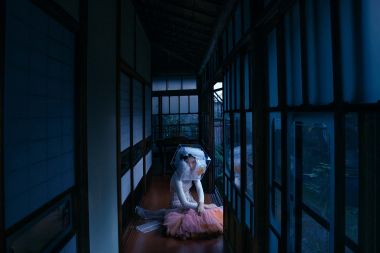
Luckily for Slaby, acknowledgment of the struggles someone close to her faced imparted a deep appreciation for the ability to break through adversity.
A Joy That’s Shared
“Growing up, my family was a little mean, well, maybe a little bit cruel. The running joke was, ‘Oh, my twin, Johnna is not the creative one.’ They saw that I was doing these hyperrealism drawings, and of course, everybody would always compare twins. She built up in her head that if she wanted to be an artist, she had to draw everything perfectly.
“Then one day, she said she saw a man sketch his breakfast, and something just clicked. Now, she has been drawing ever since. It was like someone lit a fire under her. I felt so proud at first, but then I was sad.
“I feel that creativity, down at its core, is a very natural thing for everybody. Even people that think that they’re not creative or people that think they’re not artists. It’s an incredibly natural thing.”
“I realized how she was judged, even by our family, and how much it stunted her. She was basically bullied, but was still able to push through and have a real passion for it. It has been amazing to witness; I’m extremely proud of her.”
Going forward, Johnna didn’t just help her sister passively but became a critical voice of reason. When in need of praise or critique, her twin was who she turned to.
“My sister doesn’t lie to me,” says Slaby. “When she tells me I can do better, I know it’s pure and straightforward. For others, I can be sensitive and get frustrated or sad, but with Johnna, I know it’s facts.
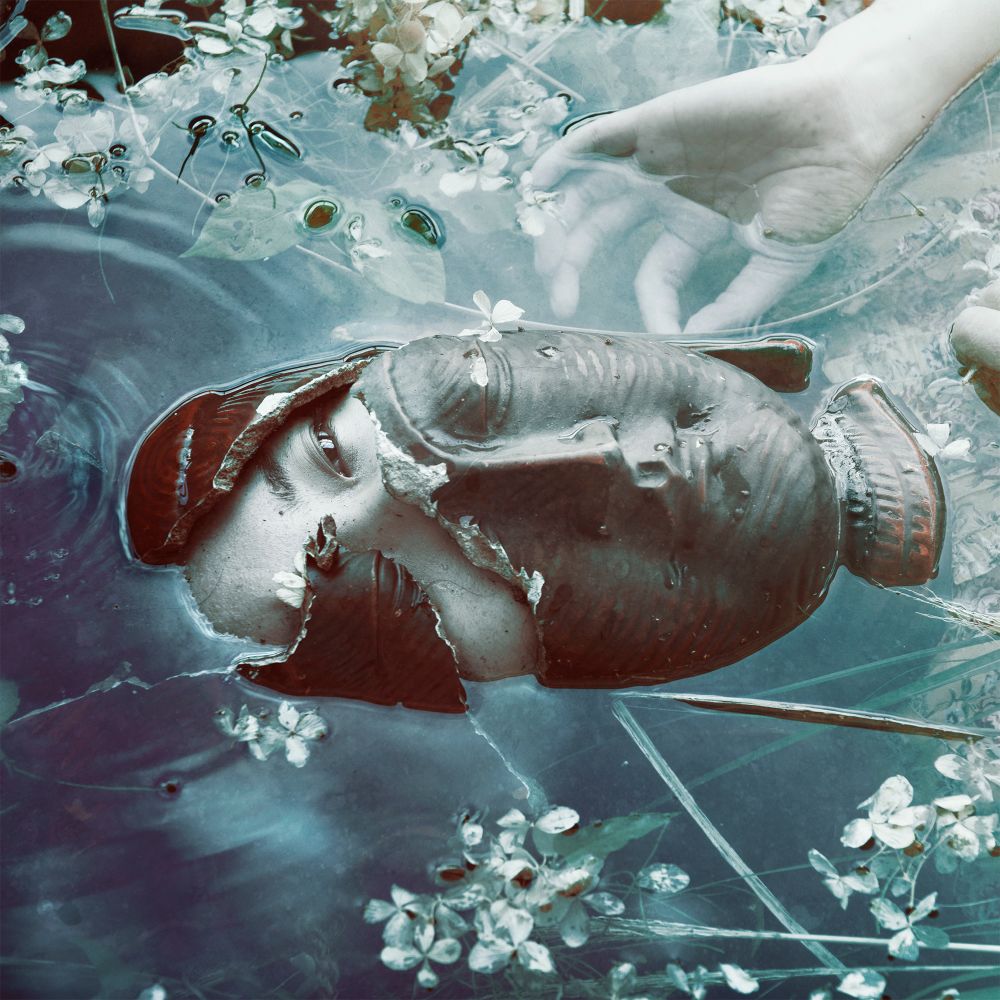
“She knows my work so well, so she knows what I’m going after. She can tell me where I can go. It’s the same feeling of looking at the same word for too long. Eventually, you can’t tell if it looks right or wrong. She’s good at stepping in and telling me whether or not something’s good.”
According to Slaby, her relationship with Johnna reminds her of an old myth that explains twins are twins in this life because they were so close in a past life they simply couldn’t go to the next one without each other. True or not, Slaby plans to continue using this bond to her advantage.
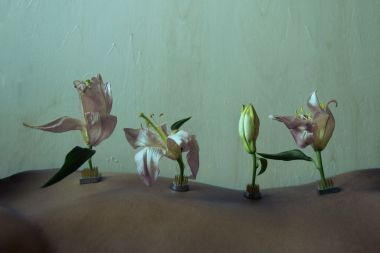
“I’m always digging up dirt, carrying rocks, getting scratched or even poisoning myself. But at the same time, it’s also incredibly rewarding.”
Whence She Sprang
“What I do is not easy. It’s rough, not only mentally but also physically,” says Slaby while gesturing to all the projects around her. “I’m always digging up dirt, carrying rocks, getting scratched or even poisoning myself. But at the same time, it’s also incredibly rewarding. If anybody else that is creative can find that place where they feel like okay, they’re on the right path.”
“Even if it’s difficult, it’s important to follow that. We have much more control over our minds and life than we think we have. We can have a lot of emotions, and we can be stressed. But the mind is powerful. The things that we tell ourselves are what we become.”
Back on the tried-and-true path to feeling human, Slaby is now in the process of creating over a dozen photographs for her first large-scale photo exhibition this autumn. With the combination of practical effects, natural elements and scaled-down landscape environments created by hand, she mentions that her goal is to enchant anyone that chooses to walk in.
“As an artist, you kind of regurgitate what you take in,” says Slaby. “If you’re born and raised in the countryside, you’ll gravitate towards it, trying to capture those feelings and memories again. I think maybe that’s what I’m trying to do.”
“I’m starting to realize that with this project, I can still go through some pretty low lows, but I can’t afford it this time. I’ve learned that the things that I tell myself come true. So I keep a beautiful thought in the corner of my mind, you know, to save for later.”
Not being stagnant is now what’s important. For her, it doesn’t just mean to keep working on her craft, but also doing what she can to keep the inspiration
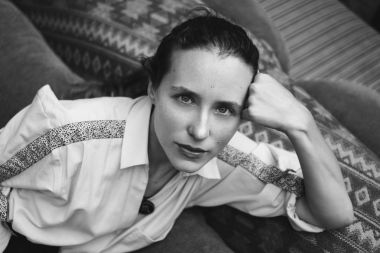
“The things that we tell ourselves are what we become.”
flowing. By enjoying nature through all of her senses, she paints mental pictures, which she portrays in her photography. Photos that she hopes will allow her to reach her final goal.
“It’s that spark. That thing inside of you, where you feel that you are equalized,” Slaby smiles. “When you see the picture, and it’s good. It’s just perfect.”
“Perfect emotion, perfect feeling and perfect in color. There’s a type of elation that’s there. You don’t feel that every day. It’s a high.”
“You come to a place in your mind where you realize this is what it should feel like to be human. I feel like that these days, in its purest form. I feel like we all have the right to be able to experience that joy.”
